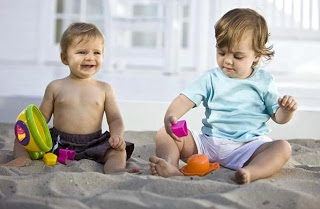Keeping your kids safe is a top priority as a parent, but not altogether easy without a plan and attention to detail. In today’s age of drug use among younger children, cases of sex trafficking and higher crime rates among typically safe neighborhoods, there are a few different precautions that should always be taken when your kids aren’t in your immediate care.
Safety Outside
Older children are often allowed to play outside without a parent hovering over their every move, but unless your child is old enough to physically fend for himself or have a phone to call for help, keeping them safe can be tricky.

Playing in the yard at home is usually the safest bet for parents, but can still invite unwanted attention if you don’t take the necessary precautions. These can include but aren’t limited to:
- Installing a privacy fence
- Installing a security camera
- Instructing children to stay in a designated area where you can keep your eyes on them at all times
If you don’t already have a privacy fence, you may want to consider installing one to keep outsiders from peering at your kids while playing. For the same reason, security cameras on all sides of your property can help thwart people who may otherwise try to sneak around your yard in search for kids. If something does happen to your children, this will also provide an ideal starting point for any investigation that takes place.

Have a talk with your kids about always staying where you can see them while playing, even if you aren’t standing right there with them. If you have wooded areas on or near your property, ensure they aren’t venturing that far from your sight.
Additional helpful safety measures can be found here.
Safety with Strangers
Regular discussions with your children about how to interact with strangers, whether at home or in a public space, can also help to keep them safe. Teach them to always get a trusted adult before speaking to a stranger, especially if they are approached by someone they don’t know. Talk to them about warning signs if they are older, such as an unknown adult following them or asking for help. Also make sure they know who can pick them up from school in the case of an emergency, so a stranger using their name can’t fool them into getting into a vehicle with someone they don’t know.
Safety In Public
Always, always keep your children in sight while shopping or running errands, even during daylight hours. Many children are grabbed in the middle of the day while a parent is distracted or just not paying attention. Don’t ever leave your child alone while in public for any length of time – make sure you’re accompanying them to the restroom, to get an extra item off the shelf, or to look at something they’re interested in.

Common places where your child may be at risk include:
- The grocery store
- Amusement parks
- Museums
- School events
- Skating rinks
- Bowling alleys
- Movie theaters
- Shopping malls
Any time you take your child to a public place with you, remind them to always stay by your side. Many young children like to hide among clothing racks or under shelves, thinking it’s a game. The more you enforce the idea that this isn’t fun or acceptable in public places and can in fact be dangerous, the better off you’ll both be.
Also talk to your kids about what to do if they’re lost. If they know not to ask just any adult for help, they will likely stay safe from predators. Tell them to find someone who works there, or an officer in uniform, teacher or an adult they already know.
Safety During Emergencies
Teach your children their address, your name and phone number. This way someone will be able to contact you if they ever do get lost. Just as importantly, teach them how to call 911 in case of an emergency. If there is a fire or you have a health emergency, they can help get help to you as well.
Encourage your children to ask questions about safety measures you’re implementing as a family. Tell them it’s okay to fight back if someone ever touches or grabs them without their permission. Utilizing effective communication and constant reminders about your chosen safety guidelines will help them to make these a habit and keep them safe over the course of their childhood adventures.










